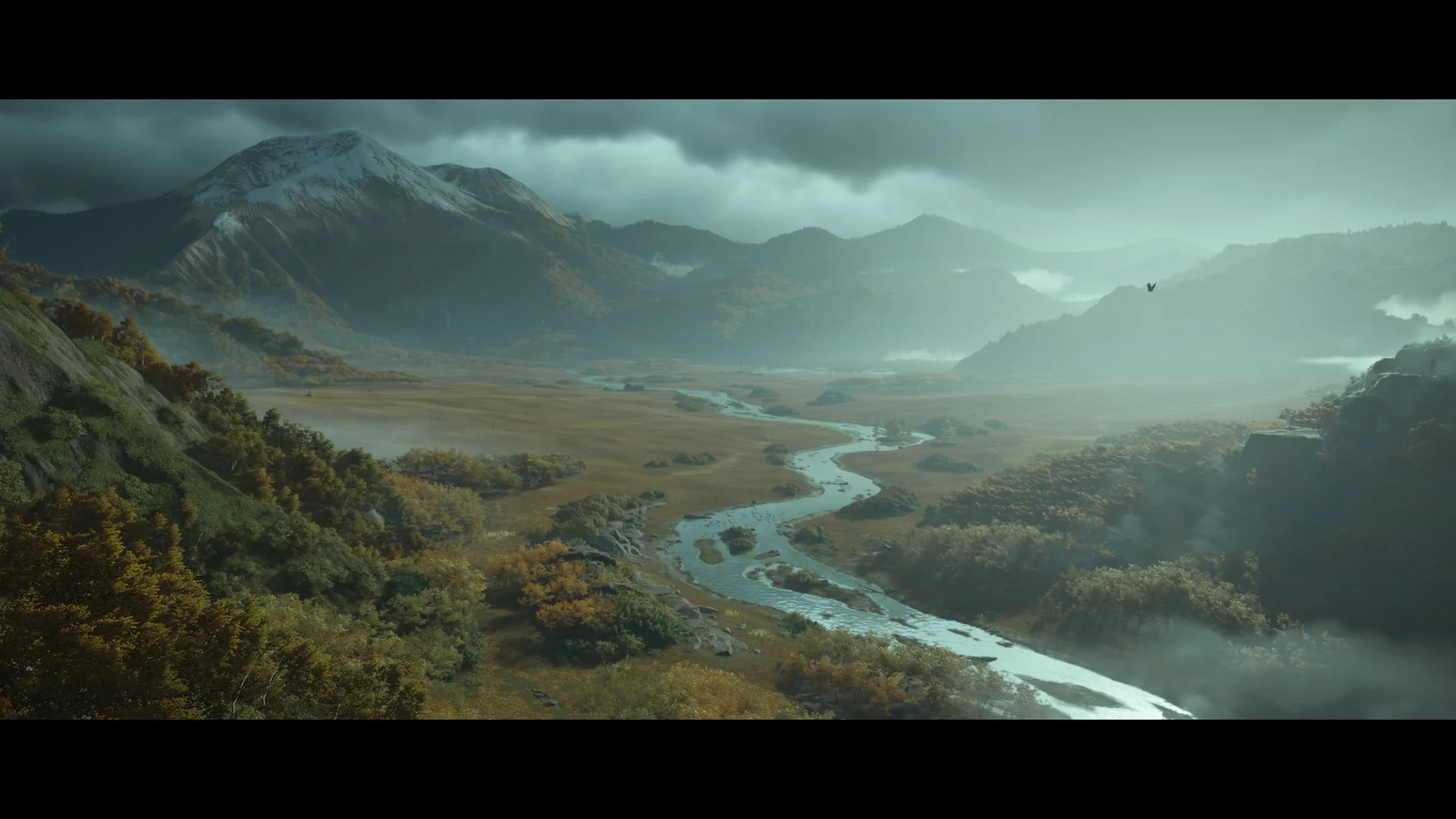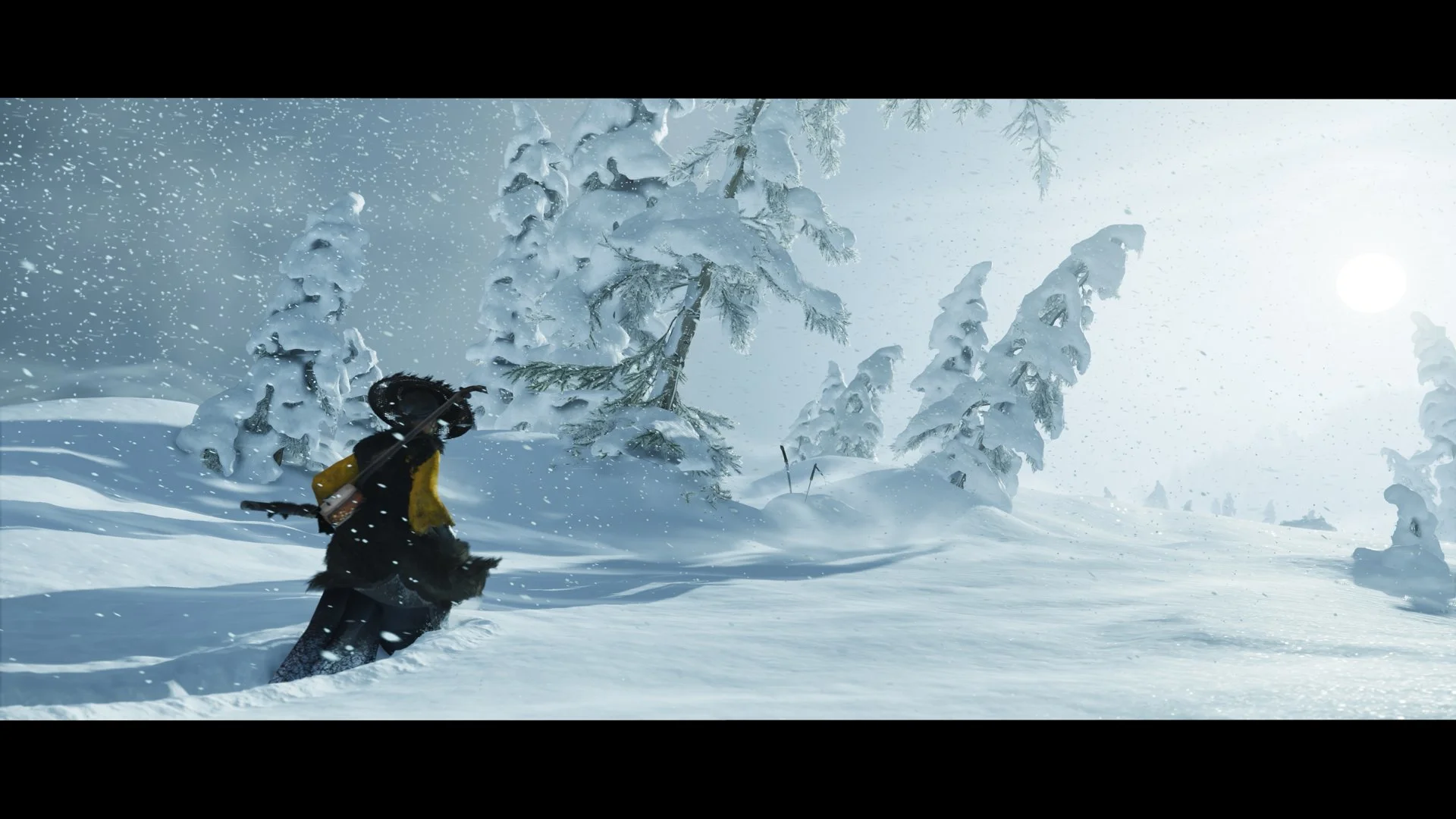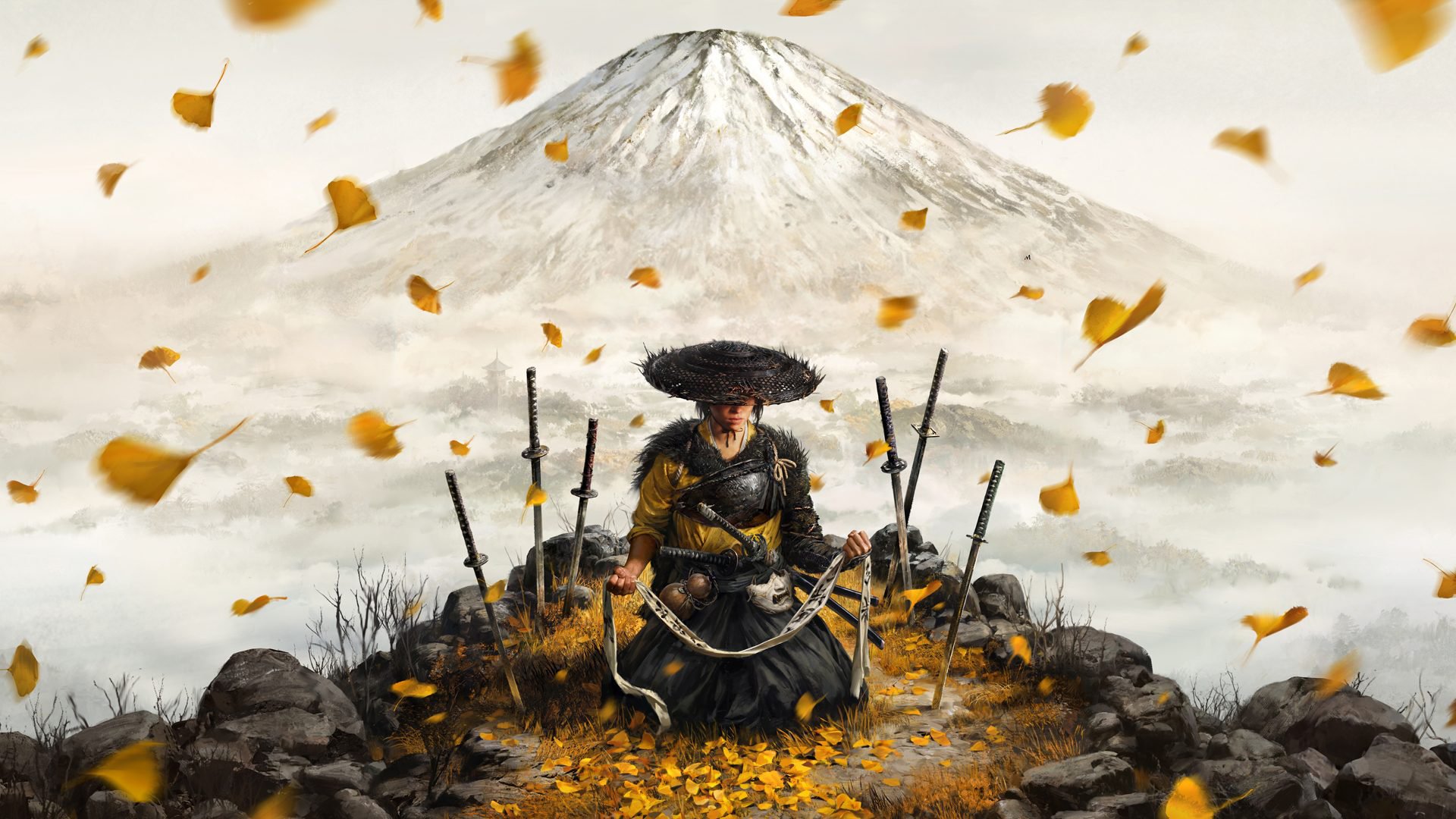Chatting with Rob Davis about Ghost of Yōtei - Interview

PlayStation have not had a booth at PAX Australia for a few years now, but they are always around in some form. This year they brought Rob Davis to the show. Rob was the campaign director on Ghost of Yōtei and was willing to sit down with me to answer my questions.
So read on to learn about why Hokkaido, what makes it special and what potential locations could be next for the series.
Maxi-Geek: My first question about Sucker Punch, is why there no Infamous 4? I don't care about Ghost of Yōtei, I want Infamous 4.
Rob Davis: It's a pretty simple answer. We tend to just focus on one thing at a time. Clearly after Tsushima, we saw players in love the world of Japan, and it's created fabulous exploration for players, but it also requires an incredible amount of focus to get all the details correct, to work with our advisors, to travel to Hokkaido, and to tell a genuine story of vengeance and Atsu's personal emotions. So, to do that, we can't do five things at once we focus in really heavily as a team. We did, you know, put some Easter eggs in the game this time as a nod Infamous, but it's really all about the focus and all of us driving in one direction. We're only 170 people on the team compared to some bigger teams out there. So, for us, one thing at a time and we just value that focus highly.
MG: Fair enough. Given that this is a sequel game, if in general location and gameplay, were there things that you wanted to do in the sequel that maybe you didn't have time for in the first game or you knew you wouldn't be able to do the right way originally?
RD: Well, I'll tell you, one of the big things that we had as a goal was to make everything in the open world feel handcrafted, special, and like it was contributing to Atsu, the Yōtei Six, or the world of Hokkaido and Japanese culture generally. It's been fascinating to see how much players have latched on to that. I'm sure you've seen some memes online where people say, I'm 30 hours into the game and I'm going to kill the snake and we take that as a compliment because we had a goal to create the feeling of wandering, like you're a real samurai.
Early on we look at films like Yojimbo, Lone Wolf and Cub, maybe even Thirteen Assassins. We start to wonder, “okay, well if I could play that, like if I could be a wandering sell sword”, would it be a strong fantasy? We look at the world, okay, Hokkaido, well that's super lethal, it's danger around every corner, it was actually out of the lore of Japan at the time and we started putting those two things together and realized, okay, there's a pretty strong fantasy and pitch here. A mercenary sell sword out for vengeance, a dangerous land full of ronin and bounties and Ezo six villains where there's threats around every corner. And if we could capture that feeling of wandering, what would it take? And very quickly we realized, Okay, we need to honour that as a verb and as an emotion, which translates into being, okay, we're going to make the most open and free game Sucker Punch has ever made. Hmm, no small task.
MG: Interesting
RD: So, what we realized by doing this is that everywhere the player goes, the more we keep the game diegetic and cinematic, we have to honour the player's travel experience. We can't have exploration letdowns. We can't have points of interest in the game that are disappointments, and we can't have content deserts in the game. And that inspired us to say, we have to honour the player's journey as they travel across the land, and we have to trust that players will miss some things and be inspired by other things and I would just say generally, we had a goal to make everything more handcrafted and more hand-touched this time. That's one of the big improvements that we're shooting for on this game.
Then the second part was kind of going even more cinematic and even more diegetic as much as possible. So, we actually shipped the game without a journal this time around, which is pretty unusual for an open world game and leaned into the map and the feeling of discovery as well. In doing so, that also made us think about the content density and the variability and the variety that you'd find in the open world and those are two big things we're shooting well three really can we capture the feeling of a wandering mercenary, yeah can we make everything feel hand touched and hand cropped so your travel journey is meaningful and worthwhile and third can we push the variety and density in the game as well that seems to have really connected with players from what I'm reading online but Maybe you have your own thoughts.
MG: Yeah, I mean, I haven't played it myself because it's that time of year and it's just so many things to play.
RD: It's a good Christmas game, actually, strangely, this one.
MG: I'm looking forward to if I get a chance to, because I didn't review Ghost of Tsushima either, but when I was able to, I picked it up and that's when I started playing it. So, I'm looking forward to doing that in the break.
RD: One of the things people have told us is while there is this thoroughly, I think, entertaining revenge quests and vengeance quests through the game, the game is quite chill at times, where you really can wander around and appreciate nature. So, I hope you end up having a good time with it.
MG: I hope so. Japan is a country that has created a pretty impactful meaning to games and the country itself is often the star of games, but those are usually Tokyo, Kyoto or Osaka. Tsushima is a known place to some folks, but it remained a mystery to many others, until the first game. With Hokkaido it sort of has the opposite impact, where people known the name, but they don’t really know the location. Was picking Hokkaido something because it just naturally evolved that way? Or were you simply thinking, this is the other end of the country, everyone knows Okinawa, everyone knows the beaches of Japan. But they don't know, the snow fields, let's go north. How did you settle on Hokkaido as the setting?
RD: We're very inspired by nature and Hokkaido has outrageous land mass and shapes and forms. I don't know if you've ever had the chance to go, but we were able to go over, which was genuinely quite special to be able to travel and see it with our own hands and walk across it with our own feet, see it with our own eyes, and to meet the community as well. The interesting thing is some of the shapes and forms of Hokkaido are not necessarily a natural start point for, again, these big open fields could be too empty if we don't treat it correctly, or the giant snow fields have quite a lot of occluders, if you know what that is, like shaped mountains or shapes that stop you from seeing across the world sometimes, and even blizzards and fog that on paper, make it harder to explore.
But the feelings we felt were genuine, the space is incredible, and it's inspiring, and it feels almost like four seasons can exist all at once within one space. In fact, we got this travel brochure that showed Hokkaido through four seasons, which is really inspiring. So, you take those things together, a wandering mercenary, a tale of vengeance, an area that's beyond the north of lore, which is terrific for sell swords and ronin stories. And then you just have the human inspiration of visiting the space yourself and Hokkaido was a very inspiring choice because of those reasons.
MG: Cool. So, you mentioned about some infamous Easter eggs in the game and Sucker Punch is probably my favourite PlayStation Studios group. Because again, Infamous, it's just such a game that I loved and you had, back in the day, Sly Racoon. So, you sort of build these like worlds of games and character, and then you move to another one, and then you move to another one. Do you see the studio sticking with the Ghost series for another two or three entries because there's so much more to Japan for people to discover, or are you just taking it one game at a time and seeing what evolves from things from there?
RD: Actually, we're taking one baby step at a time right now because we're doing the Legends mode right now, which is out next year and that's a nice creative release valve for our team as well. So, we have Ghost of Tsushima anime coming up next year and we have Legends mode coming up. In Legends mode, we get to go more full force of mythology and we get to go a little more wild and crazy with things which is Ghost is so authentic to Samurai Cinema and so being able to tune some different knobs and see some different scales and push on mythology is it's really fun for us but beyond that we don't really have anything to announce or talk about right now we're just putting all our effort into Legends.
MG: Tsushima got Legends as well, and it became a bit of a thing. People really, really liked it. Are you hoping to expand on what Legends offers in Yōtei, or are you looking just to craft it as its own thing and just see how players respond?
RD: Legends will be free again early next year, and we have co-op mode, and we have the four-player mode as well this time. But beyond that, I think our answer is stay tuned for more information to follow okay and I'll let the Legends team have their own moment.
MG: I'm trying to sneak one in there but okay you caught me. The only other thing I'm really curious about is Hokkaido, as I said before Hokkaido is such an unknown place, are there any elements in the game that you think players should pay attention to like any moments or any places that because of the history from the actual country that when you replicate it in game, it's something that people should pay attention to because of whatever the reason is.
RD: That's really interesting. What a great question. Things that are unique to Hokkaido that we want players to think about.
MG: Yeah, because we see it in games like, if a game is set in New York City, people always go, ‘Oh, I'll go to the digital Times Square or the digital Central Park’. There's always places that people know. But being Hokkaido is such an unknown place to a vast majority of the world, there's got to be some place that's resonated with the team that you're like, we hope players discover this because it's either a beautiful vista or it's the people that were there were just the most welcoming.
RD: Well, certainly the one for me was the seasonal variety. I don't want to spoil things for players, but we allow you to go practically anywhere from the start of the game and the biome diversity in this game is quite spectacular. So, when you're running through the snow, it's quite a different emotion and feeling from when you're standing on the cliffs or the beaches in the game. We partnered really with this wonderful Ainu advisors as well on this game and when we met with them in Hokkaido, that was, of course, a very special feeling to be trusted and welcomed into their homes and into their community to understand the history of the indigenous community in Hokkaido. So, I hope players spend a little bit of time poking around the Kotan that we have made in the game and enjoy the stories and perhaps really for all of Ghost, if you like the tales of mythology, of history, of nature, of the indigenous people, I hope people are maybe inspired to go and look at some of the films as well, or some of the arts and crafts in the real world and maybe the game will inspire people to be interested in the Ainu community as well.
MG: Is there something that you learned about Hokkaido from the game that still sticks with you today, like a story or a person that you met?
RD: Yeah, I mean, when we met with the Ainu, we went foraging. Some people have talked about this, but the feelings and emotions that we experienced were genuine. And we were able to go into the mountains and forage, and then we actually made lunch together with the very herbs, the ramps, as they're called, and we make tempura and different meals in the afternoon. I speak just enough Japanese to get by because I studied it in college. So, to be able to communicate with people lightly was quite meaningful at a human level.
But also, just out of pure fascination, one of the coolest parts is the way Ainu robes are made is by weaving bark, and it's quite sticky and interesting and it's always, when you see things like that, you always realize how small your world is sometimes. I hope people are inspired to go to Hokkaido because you see how creative the world is, how similar but different we all are, different cultures. Those human connections transcend language barriers sometimes and cultural barriers sometimes. So, I hope you do get over to Hokkaido.
Oh, and also there was a particularly quirky mascot for Hokkaido, which I think is a clam and he's so quirky, but he's so outrageously different from how we draw to cartoon characters. I'll find him for you, but he's a, I can't remember his name. But the logo is almost a, or the mascot is a, I think it's a surf clam. And it stuck in my mind because it's, I don't know, it was such a quirky character.
MG: When have you ever seen a surfing clam before?
RD: Yeah, not much beyond that. I mean, it was a very inspiring trip and the motions of a space sort of carry you through the project as well. Sometimes you have to remind yourself, how did I really feel in this moment when the wind was almost making me cry because it was so strong? And then how can we actually deliver on that in the game?
MG: Amazing. Now I'm not asking for an answer on this one, but could you see the Ghost formula work in other countries? Could you see like a Ghost of Germany, not asking if you could commit to the ghost of Germany, but.
RD: What I'll say is that there were some jokes when we were in Auckland to do Ghost of Wellington. So, stay, watch this space.
My thanks to Rob for taking the time to answer my questions about Ghost of Yōtei. If you are still unsure about picking up the game, be sure to check out our review.










